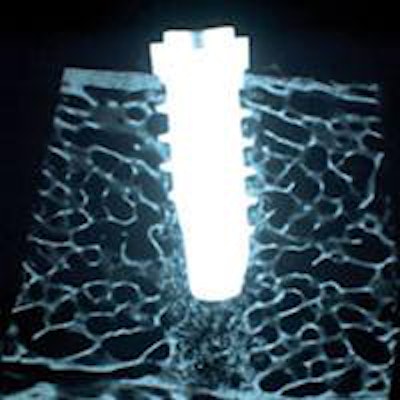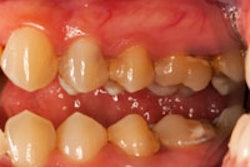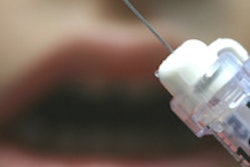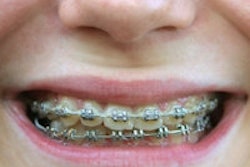
A Swiss company has created a coating that could improve upon one of titanium's most important characteristics when used in dental implants: biocompatibility. The firm believes that implants coated with its SurfLink material will bond to bone even more effectively than bare titanium, improving implant stability, speeding patient healing, and reducing costs.
Nano Bridging Molecules (NBMolecules) is presenting the first clinical data on its SurfLink technology at a European clinical meeting this week. The technology has already received the CE Mark in Europe, and NBMolecules hopes to bring it to market through deals with implant manufacturers that will enable it to offer SurfLink-coated implants directly to dentists.
Titanium's great leap forward
Without titanium, dental implants might never have taken a leap forward in effectiveness during the 1960s. But Björn-Owe Aronsson, PhD, NBMolecules co-founder and chief technology officer (CTO), believes that there is room for even greater improvement.
 Microradiographic image of SurfLink Dental-treated implant at two weeks after placement in sheep. The implant is closely in contact with both cortical and cancellous bone. Image courtesy of NBMolecules.
Microradiographic image of SurfLink Dental-treated implant at two weeks after placement in sheep. The implant is closely in contact with both cortical and cancellous bone. Image courtesy of NBMolecules.
"The technology of the SurfLink enables cells to grow bone directly onto the surface and to integrate implants, especially dental implants, faster and with true osseointegration."
Available as a sterile powder, SurfLink is mixed with water and applied as a solution onto the surface of dental implants. "It is perfectly fitted to be integrated to implant manufacturers' facilities as the last step of the production line just before packaging and sterilization," he explained.
The material is made up of a monolayer of permanently bound multiphosphonate molecules. These molecules are highly desirable, the company explained, as they are comprised of phosphate molecules, an essential component of bone. And their presence on the surface of dental implants could reduce biocompatibility issues. That could broaden the patient base for dental implants to individuals with bone-quality issues that might otherwise prevent them from receiving implant treatment.
When applied, the molecule stays affixed to the implant surface between pH levels of 1 and 9. The layer also makes the implant surface hydrophilic, so water, proteins, and cells are attracted to it, enabling faster cell adhesion and colonization. Ideally, the results are faster bone matrix formation and osseointegration.
“The advantage is more rapid healing and better stability.”
co-founder and CTO, Nano Bridging
Molecules
NBMolecules' goal is to reduce the number of surgical revisions, lower patient suffering, and produce cost savings. "The advantage for patients is more rapid healing and much better stability of the implant," Aronsson stated. "Also, the new clinical data that we're releasing show marginal bone levels around the neck of the implant are maintained in a much better way, as a great enhancement of the preservation of the marginal bone levels."
The 10-year-old company will present clinical findings supporting their observations on SurfLink's effectiveness this week at the European Association for Osseointegration Annual Scientific Congress in Dublin, Ireland, running from October 17-19. The meeting will be the first time that clinical data for SurfLink have been presented, according to Aronsson.
To date, the company's clinical data have come from testing SurfLink-coated implants in "small and large animals and now into humans," Aronsson noted. Several self-published white papers have been posted on the company's website. In one white paper, NBMolecules stated that "histological and radiographic evidence clearly showed, even by two weeks, that SurfLink Dental treatment prompted early bone formation on and around the implant surface. And, at 52 weeks, SurfLink Dental-treated implants showed a considerably greater bone-to-implant contact."
The technology received a European CE Mark as a dental implant product in 2011, which allows NBMolecules to sell and distribute its products throughout the 28 countries of the European Economic Area. And in May, the company was recognized by Frost & Sullivan, a global growth strategy company, receiving its 2013 European Frost & Sullivan Technology Innovation Leadership Award. The company hopes to drum up interest in its product from implant makers.
The idea for the SurfLink technology came from Pierre Descouts, PhD, co-founder and professor emeritus in the section of physics at the University of Geneva; Descouts now serves as chairman of the company's scientific advisory board.
Once it became known that titanium was well-accepted by the body, Descouts posited that a surface treatment or coating could render the implants more bioactive.
"Knowing that bisphosphonates are used for osteoporosis treatment, he put two things together and started to develop a completely new set of molecules together with chemists," Aronsson said. "That's where I came into the picture. I found it interesting and saw commercial potential, so I said, 'Let's apply for patents and begin business planning.' "
Aronsson hopes to reach an agreement with an implant manufacturer by mid-2014. "Within a year, there could be the first implants coming onto the market with SurfLink on the surface," he said.



















